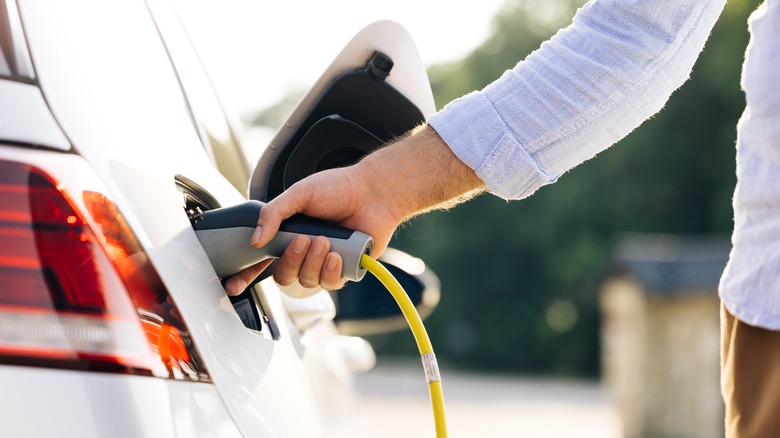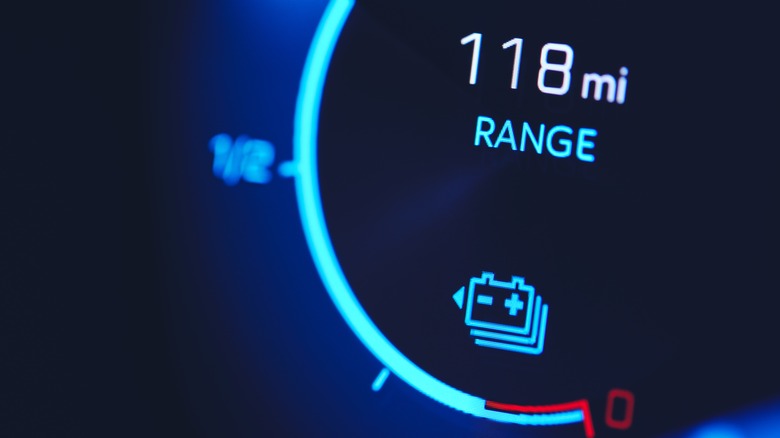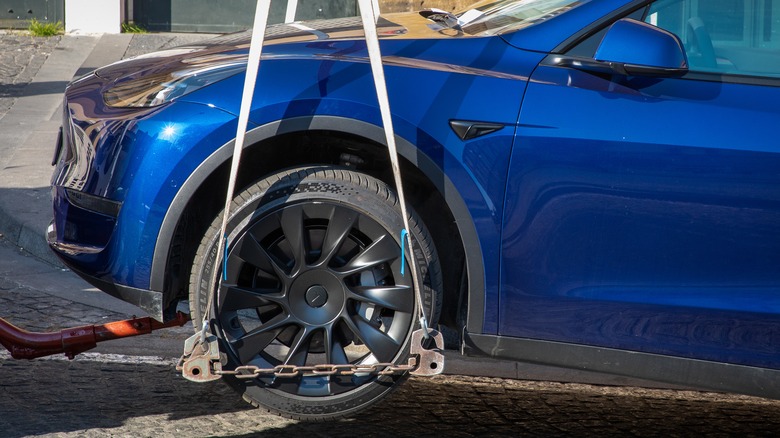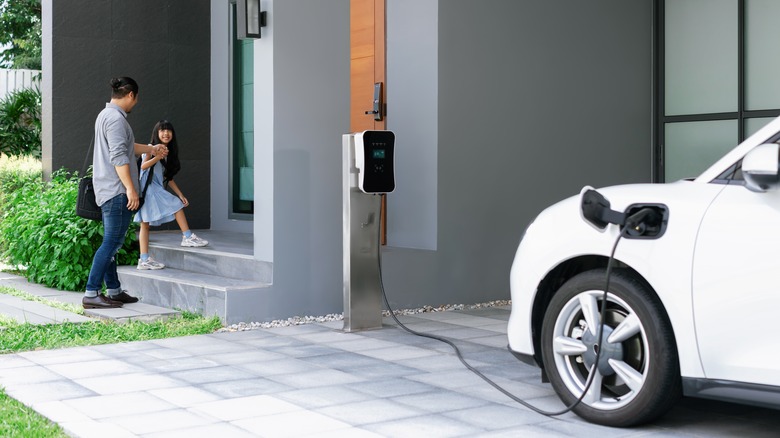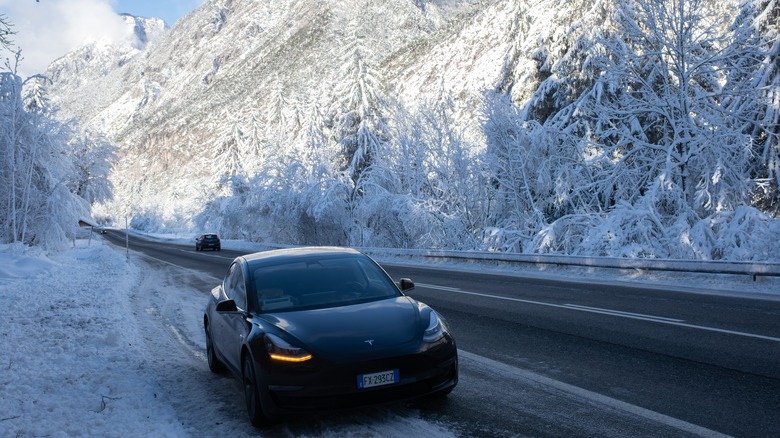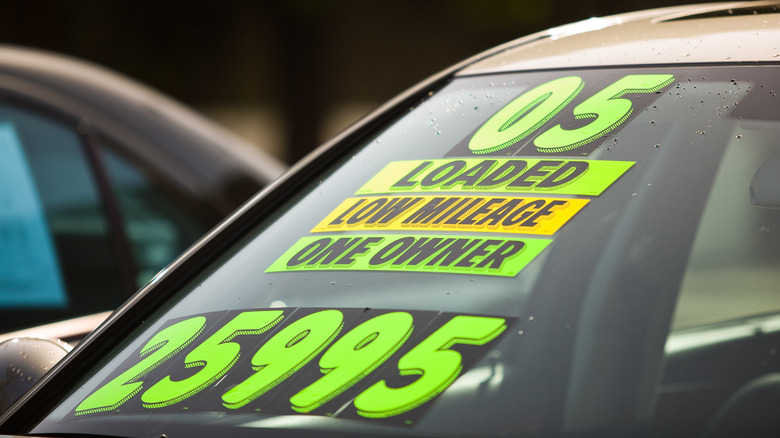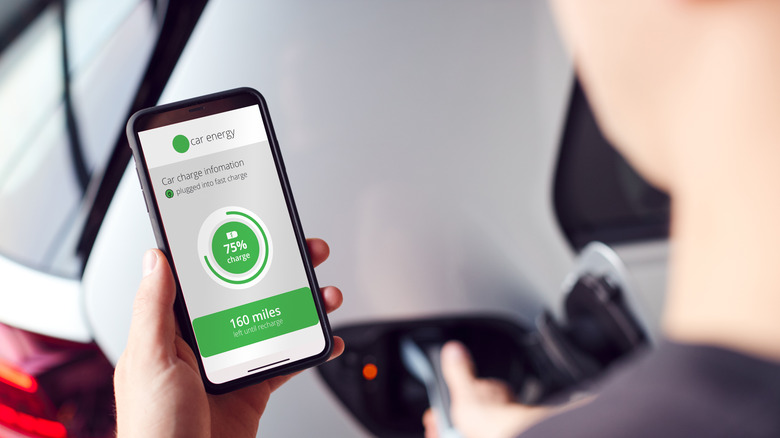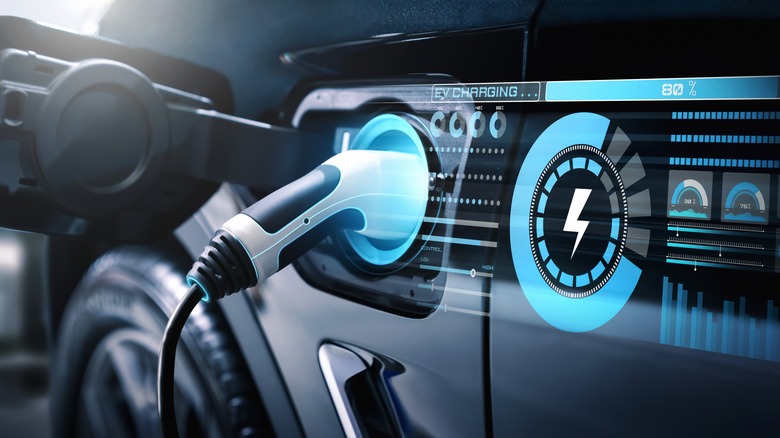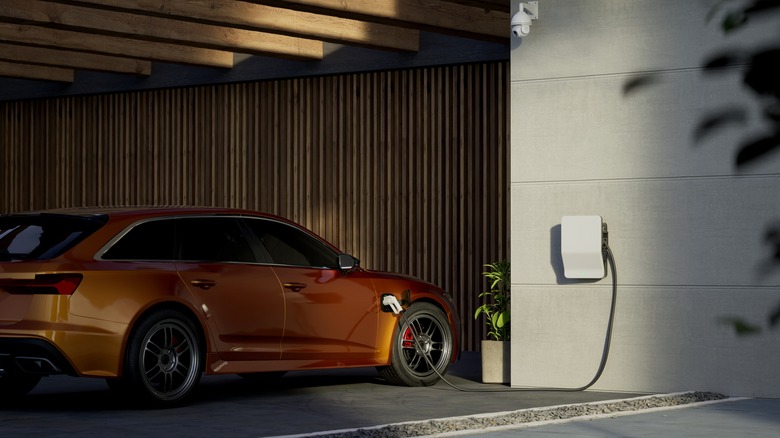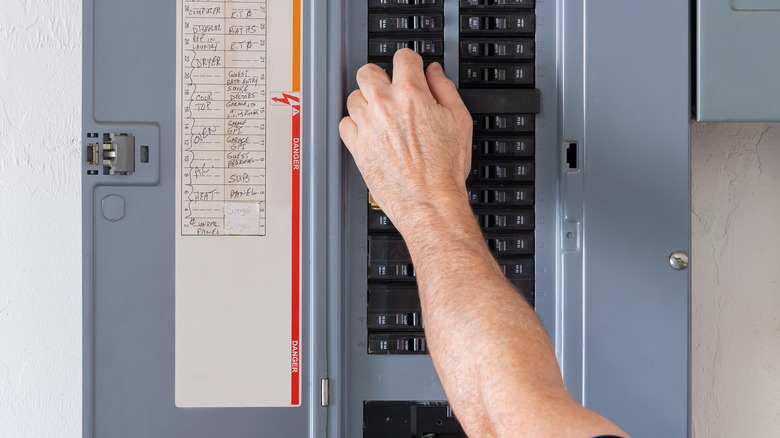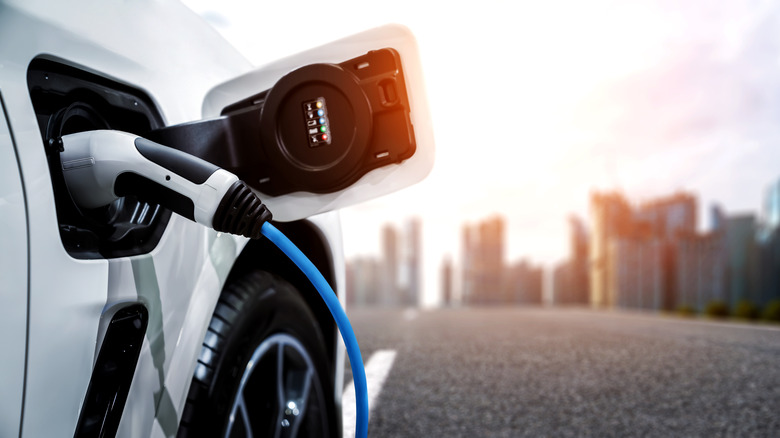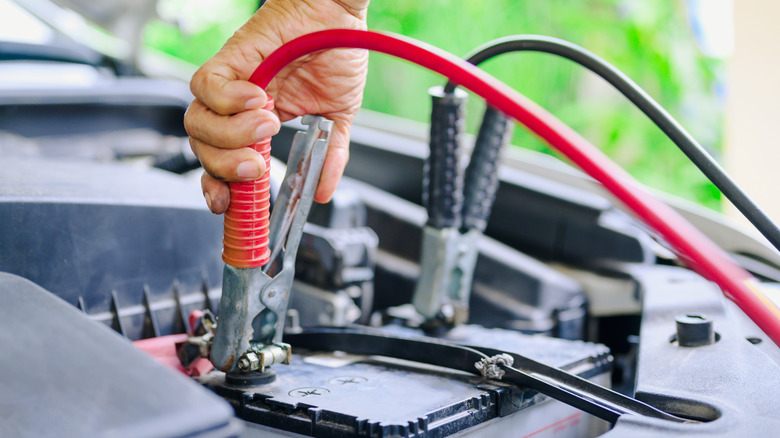12 Common Mistakes Every New Electric Vehicle Owner Needs To Avoid
Not long ago, electric vehicles (EVs) were the stuff of legend, something car manufacturers tried to accomplish every once in a while, but never really pulled off. Over the last decade, however, EVs have become increasingly common, with most major automobile manufacturers having at least one fully electric or hybrid model in their inventory.
For a long time, the big barrier was developing battery technologies that were compact enough and light enough to cart around with you, but powerful enough to give you a decent amount of range. As battery technologies improve and EVs become increasingly affordable, they're likely to become even more common.
Already, EVs have accounted for an estimated 8% of total new vehicle sales in 2023, and the technology is still new enough that a significant portion of those are first-time EV owners. This means there are a lot of new EV drivers out there dealing with the unique challenge of EV ownership for the first time. At the end of the day, it's just a car, but there are enough differences between EVs and gas-powered vehicles that you might make a crucial mistake because no one bothered to tell you. With that in mind, here's a road map to the most common mistakes new EV owners make, so you can avoid them.
Wrong battery regeneration method
The primary way your EV gets power is through charging. Once it's plugged into the electrical grid, either at home or at a public charging station, the car sucks up as much electricity as the batteries can handle to get you to where you need to go. However, most EVs also use regenerative braking to reclaim a little bit of power while you're driving. It's a nice way to extend the battery life, but only if you use it correctly.
When regenerative braking is activated, your car captures resistance and converts it into electricity to give your battery a boost. It might seem like capturing as much resistance as possible is a good idea all of the time, but that's not always the case.
The best time to use regenerative braking is when you're in stop-and-go traffic and braking often. You're already hitting the brakes, so you might as well take advantage of it. If, however, you're cruising on the highway, regenerative braking might actually cost you power. This might be because anytime you let off the accelerator or tap the brakes, your car is going to start resisting to get as much power regeneration as possible. Then, you have to accelerate again to get back up to speed.
Driving too fast
EVs have a surprising amount of get-up-and-go for essentially being oversized RC cars you can ride in. The upside to these vehicles is that you can really get them moving if you need to, but that power can be addictive, and you might find yourself burying the pedal at every opportunity.
Unfortunately, much like internal combustion vehicles, running your EV at high speeds requires more energy. Since EVs rely on a single-gear system, they have an impressive level of torque to get moving quickly, despite how heavy they are. The downside is a loss in efficiency when accelerating and when at high speeds.
The reason all cars lose efficiency at high speed has a lot to do with wind resistance. The faster you're going, the more resistance you're fighting against, and the less efficient your fuel economy. This is true of EVs as well, but the single gear causes trouble here, too. The faster you're going, the less efficient your single gear is and the more battery it chews through. Your best bet is to stick with the speed limit and choose slower roads when possible. Not only will it avoid unnecessary traffic tickets, but it will also extend your battery life.
Amateur towing
One of the most common concerns among EV owners is anxiety surrounding battery range. With a conventional internal combustion vehicle, you have the benefit of a robust infrastructure of fueling stations. With an EV, you don't have that luxury. Instead, you're reliant on charging station infrastructure which is still being built out. On a long enough timetable, it's probably inevitable that you'll run out of battery somewhere and end up stranded.
If you're relatively close to home, you might be tempted to call a friend or neighbor with a tow strap to come and drag your car to an outlet. Instead, you should think twice and check your owner's manual. The first thing to know is that EVs are much heavier than conventional vehicles due to the weight of the batteries. Depending on your model, your EV might be hundreds of pounds heavier than a comparable internal combustion vehicle. Hooking a tow strap to the wrong part, even if it looks sturdy, can be a recipe for disaster.
Moreover, there is some risk that you can further damage your EV by towing it with the wheels on the ground. Depending on your model, turning the wheels sends power to the electrical system which can cause damage in a towing situation. If you find yourself stranded, the best thing you can do is call a flatbed tow truck to rescue you.
Forgetting to charge
If you're driving a dedicated plug-in EV (meaning it runs only on battery, with no gas tank backup) you can't get anywhere without a charged battery. Worse, you can't always depend on having a charger available in public spaces, especially if you live outside of major population centers.
With that in mind, the vast majority of your car's electricity is likely to come from plugging in at night or over the weekend, at home. The good news is you can usually get more than enough charge for an average day of driving by plugging in overnight, but only if you remember to plug in.
If you forget to plug in one evening (and you might) you might be met with a dead or dangerously low battery in the morning and several hours of charging time before you can get anywhere. Set a reminder on your phone, put a sticky note on the bathroom mirror, tie a string around your ankle, and do whatever you have to do to remember to plug in.
Forgetting temperature
If you've ever set your phone near a window only to pick it up and find a temperature warning, you know that batteries don't do well with extreme hot or cold. Your EV's batteries are no different, and because they operate in the elements, they are more susceptible to swings in climate.
You'll notice the most direct effect on battery performance in the winter months when cold temperatures cause your battery to struggle, but weather extremes on both sides of the thermometer will reduce how far you can travel. There are a couple of factors at play here. One is physical, while the other is behavioral.
First, cold temperatures reduce your battery's ability to receive and distribute electricity. It's estimated that extremely cold temperatures can reduce battery efficiency by up to 12%. Moreover, cold weather can increase charge times, leaving you with less battery to start with when you leave the house. The behavioral element is the use of climate control, which goes up when it's too warm or too cold. Using the air conditioner or heater is the most power-consuming action you can do, aside from actually driving.
Buying new
Despite the growing ubiquity and popularity of EVs, they are still pretty expensive. Tesla's most affordable model starts at $29,740 and goes up from there. This is a pretty typical price range across manufacturers for a new EV, fresh off the factory floor. As a general rule, if you're buying new, you're going to pay more for an EV than you would for a comparable internal combustion vehicle.
Additionally, because of concerns like range anxiety and underdeveloped charging infrastructure, lots of folks are still resistant to buying them, so the resale value isn't great. If you're looking to get into your first EV, however, you can use that to your advantage.
It isn't uncommon to find used EVs for sale, with relatively low mileage, for a fraction of their original cost. Buying an EV that's a few years old, particularly if it has a lower range than the contemporary average, can save you tens of thousands of dollars on the purchase price. You're getting a car that is functionally the same as if you had bought it a few years earlier. If you're unsure about committing to EV life and want to dip your toes in without breaking the bank, hunting down a used EV might be the perfect solution.
Expecting full range
When you're shopping for an EV, you're likely to spend a lot of time looking at the specs of various makes and models. Most of the time, your EV's range is a selling point, and its expected mileage will be presented prominently. If not, you can get a sense of what the range should be by visiting the manufacturer's website. If you're looking at an EV released in the last few years, you should expect something in the realm of 250 miles or more on a full charge.
That number, whatever it is, is an ideal that you will likely never achieve when the rubber actually hits the road. Those ranges are calculated under ideal conditions in controlled settings. They don't take into account all of the variables you'll encounter in the real world like environmental temperature, terrain, battery aging, and more, all of which can cause a loss in overall range.
Even if the weather is temperate, you're on a flat road, and your car still has that new battery smell, you're still likely to run out of charge before you hit the reported maximum range. Think of it like a 20% tip to the EV gods. Every trip is going to cost you a little more (in battery consumption) than you expect.
Fast charging too often
There's no reason to be coy about it; EV charge times are inconveniently long. A new EV can take more than two days to charge from empty using an at-home level one charger. If you have access to a level two charger, you can reduce that time to about eight hours, while a level three charger will do it in an hour or less.
If you've forgotten to charge, or you've got a long trip ahead of you, using a level three charger is the quickest way to get back on the road, though it comes at a cost. Not only are level three chargers typically the most expensive, but they also have an impact on your battery life.
Lithium-ion batteries are susceptible to high temperatures, and dumping that much energy into your battery as fast as they do generates a lot of heat. Most EVs have integrated temperature control systems designed to mitigate some of the impact, but it still puts stress on the battery. In controlled studies by Geotab and the Idaho National Laboratory, EVs that used fast charging more than three times a month saw their batteries degrade about a tenth of a percent quicker than EVs that never used fast charging. Fortunately, the effect is pretty small, at-home charging is usually more than sufficient, and you'll probably need to use fast charging infrequently.
Using the default charger
Your EV should come standard with an included charging cable. Typically, it will plug into any standard electrical outlet to charge your EV at home. They do the job, but they're pretty bare-bones. There's a standard 120-volt plug on one side and the EV plug on the other. In between, there's usually a small box with a few lights, letting you know when your car is charging.
For a few hundred dollars (or even more than that, if you're feeling adventurous) you can upgrade to an at-home charging station with a few more bells and whistles. The charging station itself will probably look pretty similar to what you already had, but most connect to a smartphone app which gives you greater visibility and control. You can even check to see if you remembered to plug in, without having to get out of bed and walk to the garage.
Even better, if you've got the bandwidth in your home electrical grid, you can upgrade to a level two charger and dramatically decrease your at-home charging time. Perhaps most importantly, installing a level one or level two charger may require some electrical work which will increase the total cost.
Overloading your home grid
Just because your car plugs into an ordinary outlet doesn't mean it's using ordinary amounts of energy. When charging, EVs suck up a lot of juice, and it's crucial to know that your home electrical system can handle it. You shouldn't have any problem charging from any particular outlet, all things being equal, but you may run into trouble if you try to use other power-hungry devices on the same circuit, at the same time.
When deciding where to set up your charging cable or charging station, consider what other appliances are plugged into the same circuit in your circuit box. You'll want to avoid charging on the same circuit as other power-hungry devices. Household appliances like air conditioners, electric heaters, refrigerators, stoves, and clothes dryers are obvious heavy hitters that you'll want to keep separated from EV charging.
One inconspicuous culprit, responsible for tripping many a breaker, is the microwave. If your car and microwave are on the same circuit, charging while heating up a burrito could throw the breaker. A little upfront consideration and the assistance of a licensed electrician will save you a lot of unnecessary headaches down the road.
Signing up for the wrong charging service
While most of your charging is likely to happen at home, you're still going to need to use the occasional charging station out in the wild. Fortunately, there are several companies that have established their own charging networks, and they'll give you access to that infrastructure for a fee.
ChargePoint has the largest EV charging network in the world, making it a popular option among EV drivers of every kind. You'll find chargers everywhere in major population centers, and you'll even find chargers scattered here and there in more remote areas. If you're a new EV owner and you're looking for a network to join, ChargePoint is probably a safe bet, but make sure to check their coverage map for your area.
EVgo, Electrify America, and Blink are other commonly available options in addition to Tesla's dedicated charging network. Usually, when signing up for one of these services, you'll attach a credit card and load money onto your account. When your balance drops below a certain amount, money will automatically reload. However, once you load money into your account, it's stuck there and can't be withdrawn. Before signing up and locking your money into an account, make sure the network you've chosen has chargers in your area.
Jumpstarting a car
Whether you left an overhead light on overnight, or you went to the drive-in and didn't quite make it through the double feature, we've all killed a car battery once or twice. It's a simple problem, but one that's hard to solve without help. As a result, you have to go looking for a kind citizen with a pair of jumper cables.
If you're an EV driver, you're operating entirely on battery at all times. In addition to the massive batteries that handle most of your car's activities, you do have a 12-volt car battery under the hood as well. Considering the battery hardware your EV is packing, you might assume that your car would be really good at giving someone a jump, but you'd be wrong.
It is technically possible to jumpstart a combustion engine with an EV, but it's not recommended. That's because the 12-volt batteries inside EVs are different than those in conventional vehicles as well as less powerful. You can use a conventional vehicle to jumpstart your EV but not the other way around (at least not safely). As uncomfortable as it might be to politely pass when a stranger asks for your help, EVs just don't have the power to reliably jumpstart another vehicle without risking damage.
